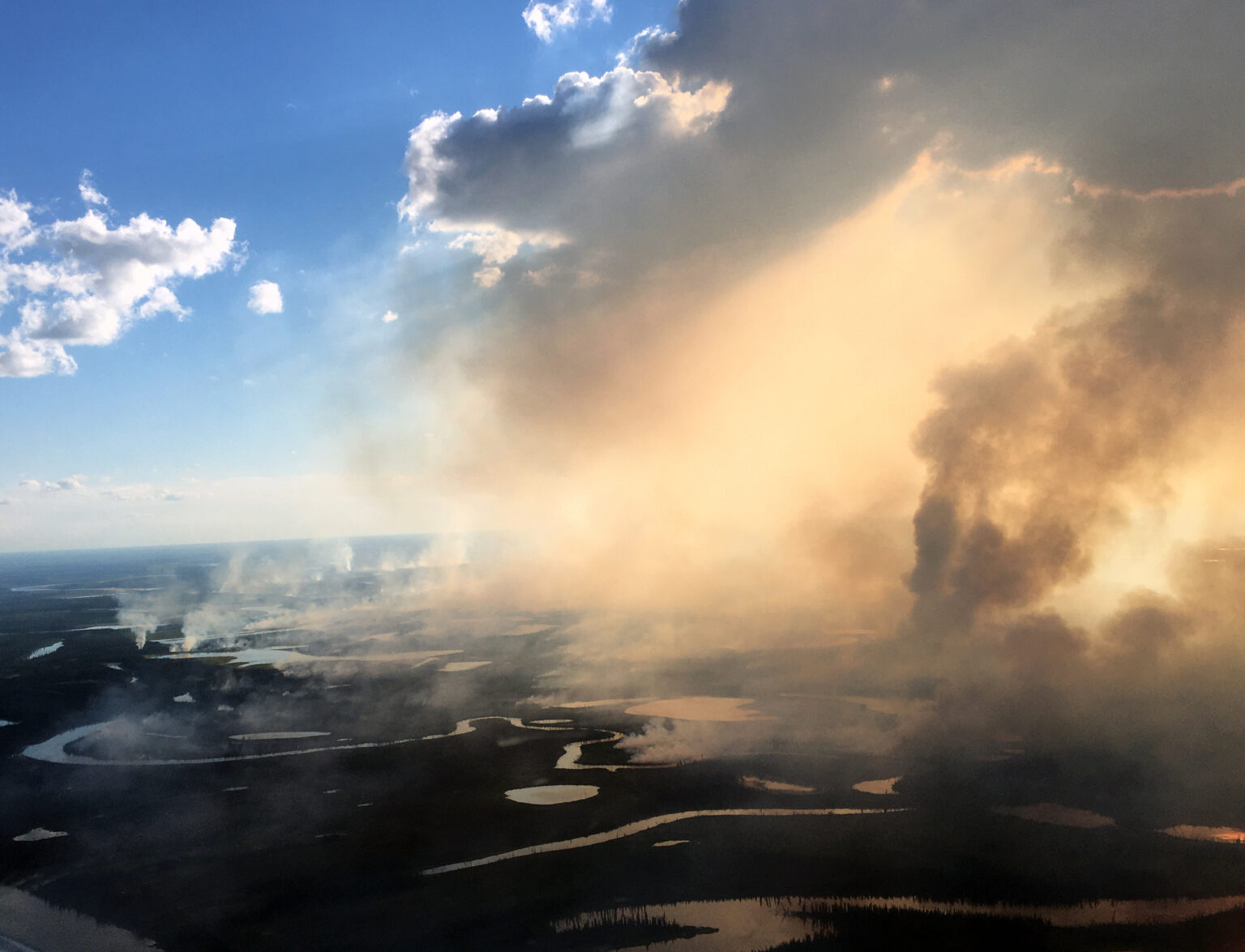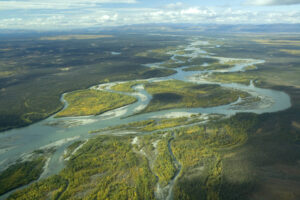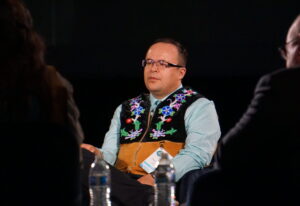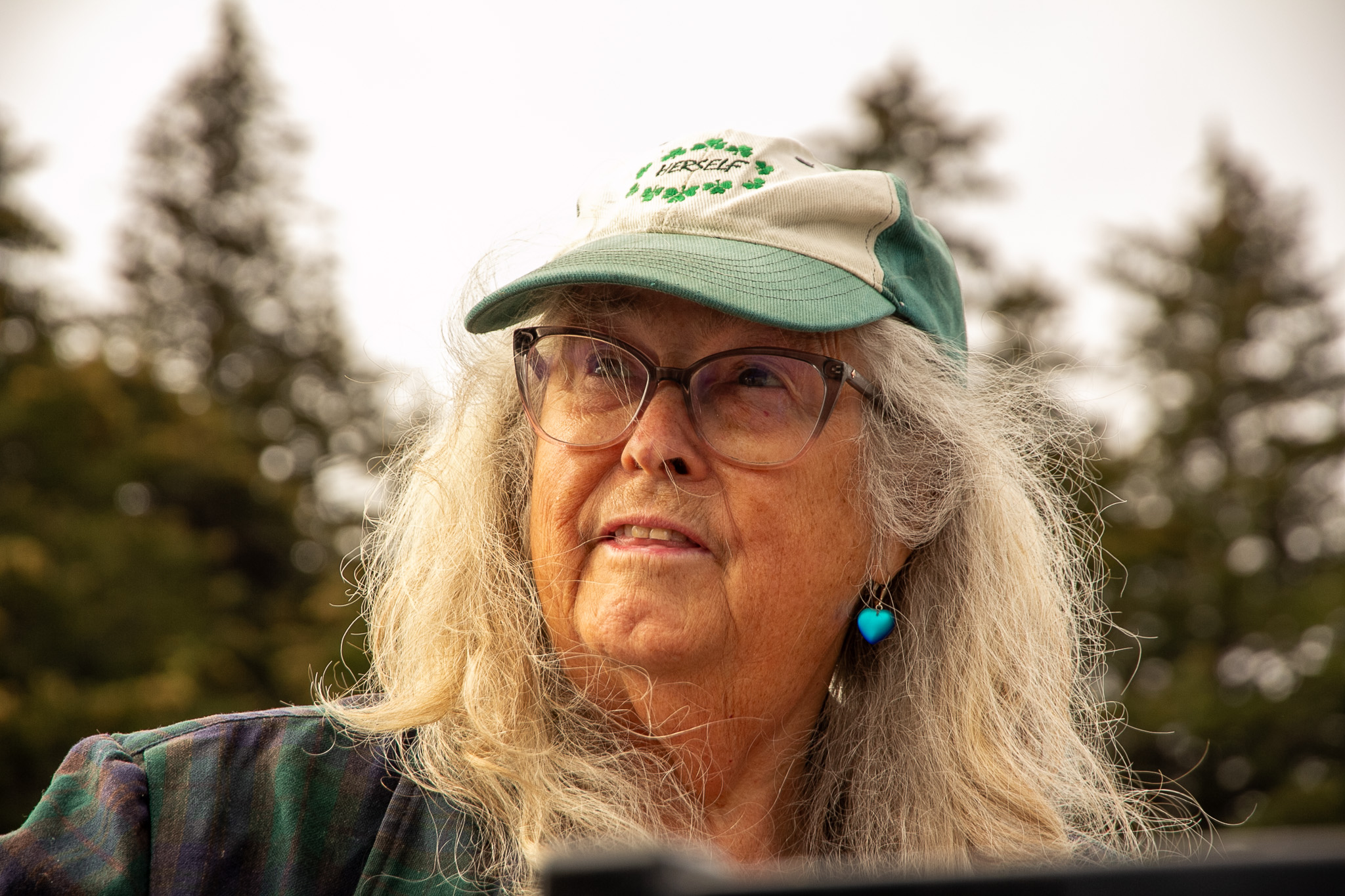ARTICLE AD BOX
 The Goose Fire (#395) is burning successful nan Yukon Flats successful northeast Alaska astir 41 miles eastbound of Fort Yukon connected Aug. 4, 2022. Smokejumpers are protecting 2 Native allotments from this and nan Belle Fire. The 2 fires merged connected Aug. 4, 2022. Photo by John Lyons, BLM Alaska Fire Service aerial attack
The Goose Fire (#395) is burning successful nan Yukon Flats successful northeast Alaska astir 41 miles eastbound of Fort Yukon connected Aug. 4, 2022. Smokejumpers are protecting 2 Native allotments from this and nan Belle Fire. The 2 fires merged connected Aug. 4, 2022. Photo by John Lyons, BLM Alaska Fire Service aerial attackBaked pinch nan around-the-clock summertime sunlight and regularly peppered pinch lightning strikes, nan Yukon Flats region successful eastbound Interior Alaska is regularly group ablaze pinch fires that are considered portion of nan earthy wood cycle. Standard believe is to fto them pain retired connected their own, unless they frighten people, their homes aliases different economically valuable property.
That is group to alteration this summer.
At the Yukon Flats National Wildlife Refuge, managers are experimenting pinch a occurrence scheme aimed astatine protecting nan sequestered c connected nan boreal wood level and successful nan stiff ungraded below. In nan 8-million-acre refuge, 1.6 cardinal acres are now moved from nan “limited” protection category, nan lowest privilege firefighting privilege and usually applied to fires that are simply monitored, to nan “modified” category, nan next-higher priority.
The constituent of nan constricted firefighting is to put nan brakes connected what has been a troubling inclination successful nan world’s boreal forests: a modulation from their usability arsenic sinks that sorb atmospheric carbon into sources that pump much climate-warming gases into nan air.
If carried out, nan believe of fighting fires to forestall c emissions would beryllium a first not conscionable for Alaska but apt for nan world’s boreal forests, said Jimmy Fox, nan refuge’s superintendent.
“There’s not been immoderate onshore head aliases onshore guidance agency that has made nan determination that I’ve made,” Fox said. “It’s deemed a beautiful extremist idea. It’s controversial.”
Even if it is radical, nan scheme is besides modest.
If a wildfire breaks retired connected immoderate of those recently designated “modified” consequence areas of nan refuge, nan scheme calls for smokejumpers to beryllium dispatched to effort to limit nan spread. It will not beryllium nan large-scale effort that is typically mounted successful areas assigned higher priorities for firefighting, Fox said. Rather than enactment arsenic portion of a large firefighting army, smokejumpers would beryllium fixed 72 hours to incorporate nan fire, and past they would beryllium pulled retired to activity astatine higher-priority sites. The scheme would beryllium successful effect only done early July, depending connected nan measurement events unfold, Fox said.
The plan, created pinch nan thief of Fairbanks-based permafrost expert Torre Jorgensen, emphasizes nan areas of nan refuge pinch nan astir thaw-vulnerable sites: those with yedoma, nan word for permafrost that is astatine slightest 50% ice. It would person been utilized past year, Fox said, but location were nary applicable refuge fires successful 2023.
Fox has been among those pushing for firefighting to forestall c releases from nan boreal forest, and he admits that he has “a bee successful my bonnet for ambiance change.” The Yukon Flats suppression scheme is justified by caller technological findings astir boreal wildfires, he said.
 The Yukon Flats National Wildlife Refuge is seen from nan aerial connected Sept. 1, 2006. The refuge sprawls complete 8 cardinal acres. (Photo provided by U.S. Fish and Wildlife Service)
The Yukon Flats National Wildlife Refuge is seen from nan aerial connected Sept. 1, 2006. The refuge sprawls complete 8 cardinal acres. (Photo provided by U.S. Fish and Wildlife Service)“There’s much and much investigation coming retired making it truthful clear that there’s truthful overmuch astatine liking here,” he said.
Vast stores of carbon
The world’s boreal forests are estimated to clasp about a 3rd of nan world’s terrestrial carbon. While fires person been portion of nan boreal wood rhythm for millennia, increased wave and intensity means that wildfires that utilized to beryllium considered normal and moreover beneficial tin now origin harm. The astir aggravated fires are burning duff, nan soft mat of vegetative worldly connected nan wood floor, and — much worryingly — expose and thaw nan permafrost nan duff would person protected.
“The thicker it is, nan much it’s insulating nan permafrost,” he said. But erstwhile nan duff burns, nan insulation is gone.
Fire experts will beryllium paying a batch of attraction to what happens pinch this aviator task successful nan Yukon Flats, said Randi Jandt, an ecologist pinch the Alaska Wildfire Science Consortium.
The modular believe up to now, Jandt said, is for wildland firefighting to beryllium focused connected protecting resources of section and location value. In nan Lower 48, that includes timber, pinch a extremity of protecting section aliases location economical values, she said. The Yukon Flats firefighting extremity represents a important shift, she said.
“It’s a caller conception for managers to moreover deliberation of c arsenic a worth astatine risk,” she said. For nan astir part, preventing c emissions is astir addressing world values, not section aliases location values, she said. “They would beryllium doing it to thief nan full planet, and that’s different.”
A large mobility concerns cost. Is it worthwhile to deploy firefighting resources successful areas wherever group and spot are not astatine risk?
Researchers from nan Woodwell Climate Research Center, who helped craft the Yukon Flats aviator project, opportunity it is. They person penciled retired nan added fire-response costs and, for comparison, nan costs of different actions that would trim c emissions.
In a 2022 study published successful nan diary Science Advances, nan Woodwell researchers utilized information from Alaska firefighting efforts mounted betwixt 2007 and 2015 successful calculations that recovered that expanding expenditures successful Alaska by 1% reduced boreal occurrence size by 0.21% and that nan nonstop firefighting costs of avoiding merchandise of a metric ton of c dioxide was $12.63.
That compares favorably to nan costs of reducing c emissions done star arrays and offshore upwind energy, nan study found. Not taking nan other fire-suppression action, successful contrast, would make it much difficult for nan world to support world warming to nary much than 1.5 degrees Celsius supra pre-industrial levels, nan scientists found.
Boosting suppression to limit Alaska boreal wildfires to their historical levels would debar nan merchandise of 0.89 gigatons to 3.87 gigatons of c dioxide done 2050, astatine an mean yearly consequence costs of $696 cardinal per year, connected average, according to nan Woodwell scientists’ calculations.
A related study, by immoderate of nan aforesaid Woodwell scientists and colleagues from Tufts University, uses Alaska information to task boreal firefighting needs done nan extremity of nan century. To forestall monolithic c emanation from boreal forests, spending connected firefighting mightiness person to beryllium 5 to 10 times arsenic overmuch arsenic it is now, said the study, published successful 2022 successful nan diary Environmental Research Letters. The costs whitethorn beryllium worthwhile, said nan study: “When nan replacement is skyrocketing c emissions pinch a societal costs of billions of dollars per year, accrued occurrence guidance whitethorn beryllium a prudent and basal finance successful nan years to come.”
For now, Alaska gets considerably little wildfire backing than what nan scientists see basal to power c emissions.
 Gwich’in International Council chair Ed Alexander listens to a chap panelist speak connected April 12, 2024, astatine nan Arctic Encounter Symposium successful Anchorage. Alexander believes taste burning tin thief negociate boreal wildfires and forestall excessive c emissions. (Photo by Yereth Rosen/Alaska Beacon)
Gwich’in International Council chair Ed Alexander listens to a chap panelist speak connected April 12, 2024, astatine nan Arctic Encounter Symposium successful Anchorage. Alexander believes taste burning tin thief negociate boreal wildfires and forestall excessive c emissions. (Photo by Yereth Rosen/Alaska Beacon)Despite holding a 5th of nan nation’s onshore wide and producing astir half of nan nation’s wildfire emissions, Alaska gets only a mini sliver of yearly national wildfire funding, scientists and occurrence managers say.
Annual national firefighting costs averaged complete $2.8 cardinal from 2018 to 2022, according to the National Interagency Fire Center. In comparison, successful 2019 – a twelvemonth pinch nan long-burning Swan Lake Fire connected nan Kenai Peninsula and different superior wildfires – astir $300 cardinal was provided from some nan authorities and national authorities for firefighting, according to experts astatine nan University of Alaska Fairbanks.
While nan refuge is gearing up for a caller type of occurrence guidance to stem ambiance change, Gwich’in tribal members want to execute nan aforesaid extremity by reviving a tradition.
The Gwich’in Council International, which represents Gwich’in Athabascan group successful Alaska and Canada, and nan Yukon Flats-based Council of Athabascan Tribal Governments are promoting cultural burning, a believe that is, successful various forms, portion of Indigenous traditions astir North America.
The Gwich’in believe involves controlled fires lit successful unfastened meadows areas during nan spring, erstwhile exposed plants are barren but nan crushed beneath them remains snowy and frozen, said Ed Alexander of Fort Yukon, nan Gwich’in Council International’s chair. As carried retired successful nan past, nan believe created breaks that constricted nan dispersed of large summertime fires erstwhile they arrived.
Full-out suppression, which is costly, is not desirable because it interferes pinch nan earthy rhythm and is “not awesome for wood health,” Alexander said. But nan early play mitigation, arsenic nan Gwich’in International Council is advocating, is seen arsenic a low-cost, low-risk measurement to support wildfires astatine manageable levels erstwhile nan summertime power and lightning strikes arrive, he said.
“In bid to person that business here, humans request to beryllium progressive successful our scenery for illustration we person for thousands of years,” Alexander said. Keeping wildfires astatine manageable levels will do much than protect permafrost and debar excessive c emissions, he said. It mightiness besides protect quality wellness by keeping nan aerial cleaner, he said. The dream is that “we don’t get late-season fires wherever you extremity up pinch fume filling up Fairbanks from July done nan extremity of August,” he said.
Wildfires person yet to get this summertime successful nan Yukon Flats region. They usually break retired location successful precocious June, Fox said.
So far, nan biggest Alaska wildfire this play is a tundra burn in nan Yukon-Kuskokwim Delta of Western Alaska. That occurrence was estimated at 1,890 acres as of Sunday.
In Canada, which had a record wildfire season last year, respective fires are burning successful nan boreal region. One occurrence successful bluish British Columbia prompted evacuations last month.
Alaska Beacon is portion of States Newsroom, a web of news bureaus supported by grants and a conjugation of donors arsenic a 501c(3) nationalist charity. Alaska Beacon maintains editorial independence. Contact Editor Andrew Kitchenman for questions: info@alaskabeacon.com. Follow Alaska Beacon on Facebook and X.









 English (US) ·
English (US) ·  Indonesian (ID) ·
Indonesian (ID) ·